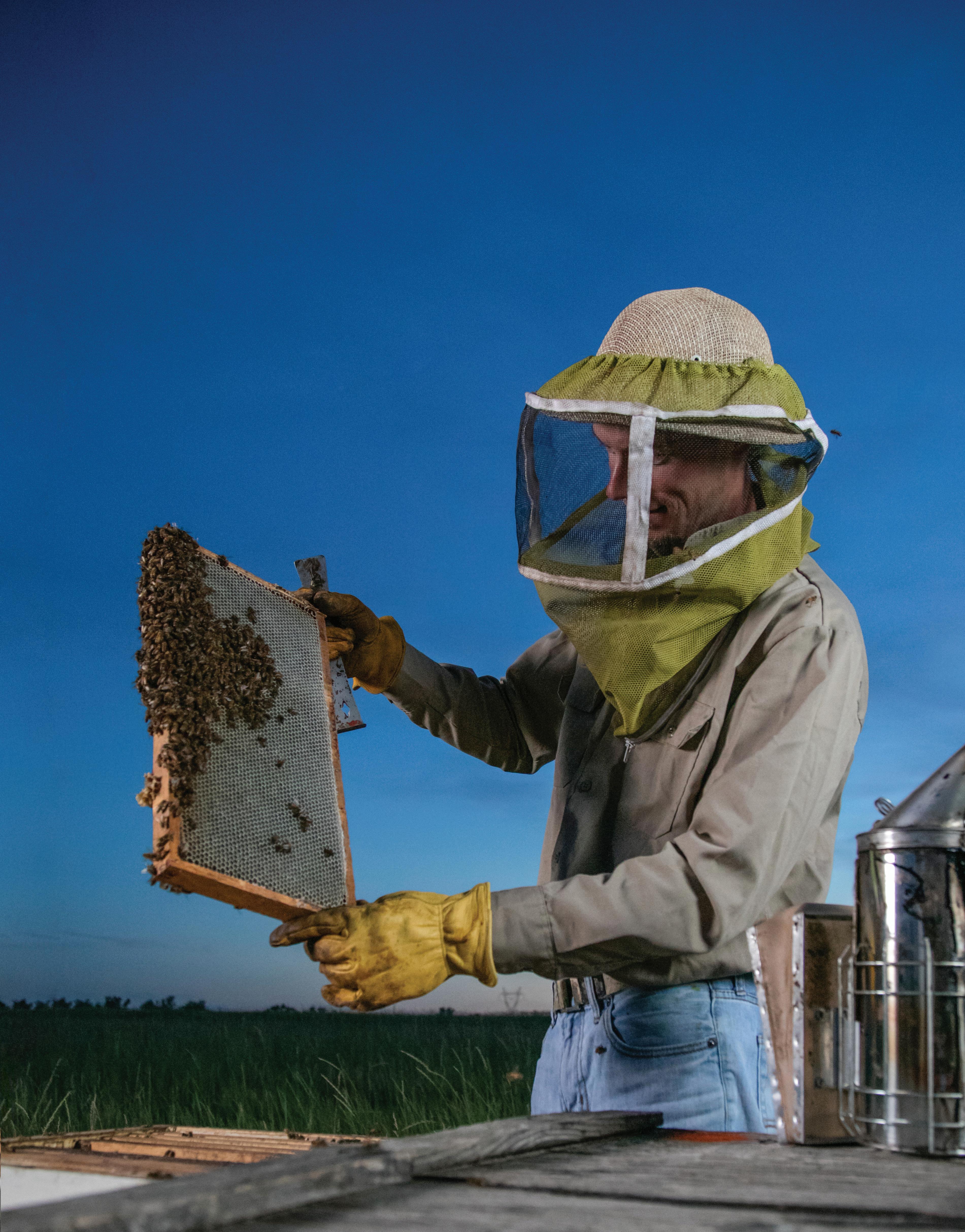AGRICULTURE BY: DAN RORVIG, NORTH DAKOTA STOCKMEN’S ASSOCIATION
BY: NEAL FISHER, NORTH DAKOTA WHEAT COMMISSION
Q: Looking back, how was 2019 for the Agriculture industry? A: For many North Dakota agricultural producers, the most positive thing they can say about 2019 is that it was a character-builder. Marked by soft markets, erratic weather and a topsy-turvy trade picture, 2019 was undoubtedly challenging. In most areas, winter’s abrupt debut and record amounts of precipitation in the third and fourth quarters stressed cattle and delayed or even prevented the harvest of important feedstuffs and the gathering of hay. A fire that temporarily closed a Kansas beef packing plant also sent shockwaves throughout the industry, depressing markets and creating much uncertainty.
Q: Looking back, how was 2019 for the Agriculture industry? A: 2019 was undoubtedly one of the more challenging production seasons in recent memory, for virtually every aspect of agriculture in North Dakota and the surrounding region. A slow, cold start to spring planting evolved into more favorable growing conditions, providing strong yield potential and an opportunity for near-record production. However, the intensity and duration of persistent heavy, late summer rains dramatically impacted harvest progress, leading to heavy market (price) discounts and abnormally high levels of mature crop abandonment (left unharvested/destroyed). Row crop harvest when and where possible, extended throughout the winter and continues into the spring of 2020.
Q: Looking forward, what is the outlook in 2020 for the Agriculture industry? A: Milder weather and new trade deals with Japan, China and others kicked off the new year and brought renewed hope for cattle producers. Economists were predicting a moderating inventory, stronger fed and feeder cattle prices, increased beef demand and profitability in each of the industry sectors. Those hopes were quickly dashed with the onset of the coronavirus pandemic, which has hammered cattle markets, messed up supply chains and accentuated the uncertainty across live-animal segments. Early estimates of the economic damage of COVID-19 to the U.S. beef industry top $14 billion. Restoring slaughter capacity and keeping the supply chain moving will be critical moving forward, particularly as the industry prepares for a record protein supply and deals with greatly diminished restaurant sales, which traditionally account for nearly half of the value of U.S. beef production.
8 } 2020 ECONOMIC OUTLOOK } AGRICULTURE
Prices remained under heavy pressure in an increasingly competitive global trade environment with very low-priced supplies available from alternate global origins. The total value of all crops harvested in North Dakota is expected to be lower than the comparatively strong level of a year ago, despite the higher yield and production potential anticipated earlier in the season. Fortunately, crop insurance provisions, trade dispute mitigation payments, and other emergency and disaster programs helped offset the 2019 crop sector challenges and economic impacts in North Dakota and the region. Going forward, recently negotiated trade agreements also offer potential sales and pricing opportunities for U.S. producers in an otherwise very complex global trade environment.
Q: Looking forward, what is the outlook in 2020 for the Agriculture industry? A: The outlook for North Dakota agriculture in 2020 is one of mixed variables. Soil moisture supplies are described as mostly plentiful to excessive. Historically, that could be a positive in a typically arid region, but heavy fall rains and snowpack in central and eastern areas heightened concerns associated with late and unharvested 2019 crops, and the degree of prevented plantings likely to affect 2020 outcomes. The later spring start-up and eventual success could have significant implications for early versus later seeded crops and actual acreage distribution amongst crop choices in the region. Prices of all commodities remain under pressure from cheaper priced, alternate global suppliers. Although domestic and global demand destruction due to the COVID-19 Pandemic remains a concern, new and recently re-negotiated trade agreements may foster additional sales and pricing opportunities if current expectations are actually fulfilled. Other positives include continued low interest rates, relatively stable land values, and input costs. In recent years North Dakota and Iowa have led the nation in planted area of USDA’s annual tally of “principal crops” in the United States, with each of the two states coming in at just under 25 million acres. North Dakota crop and livestock production consistently represents an annual total farm gate value in excess of $9.0 billion per year.


